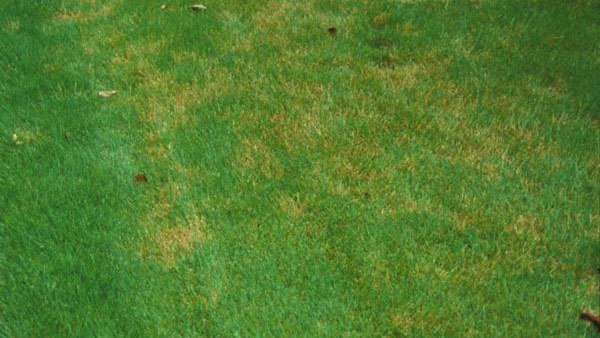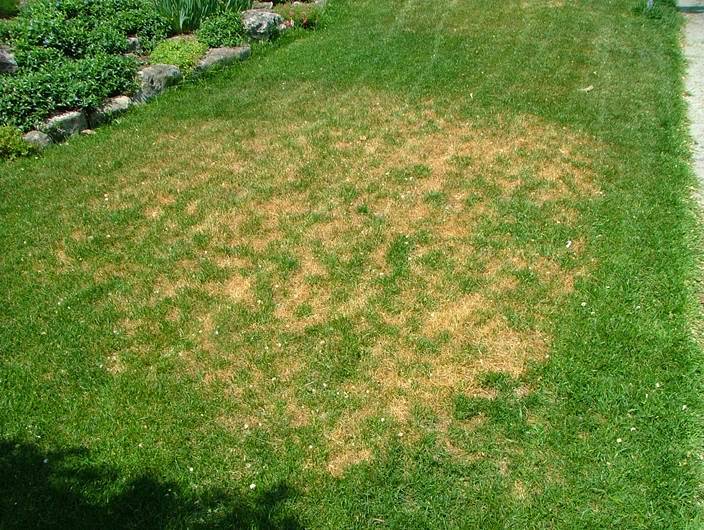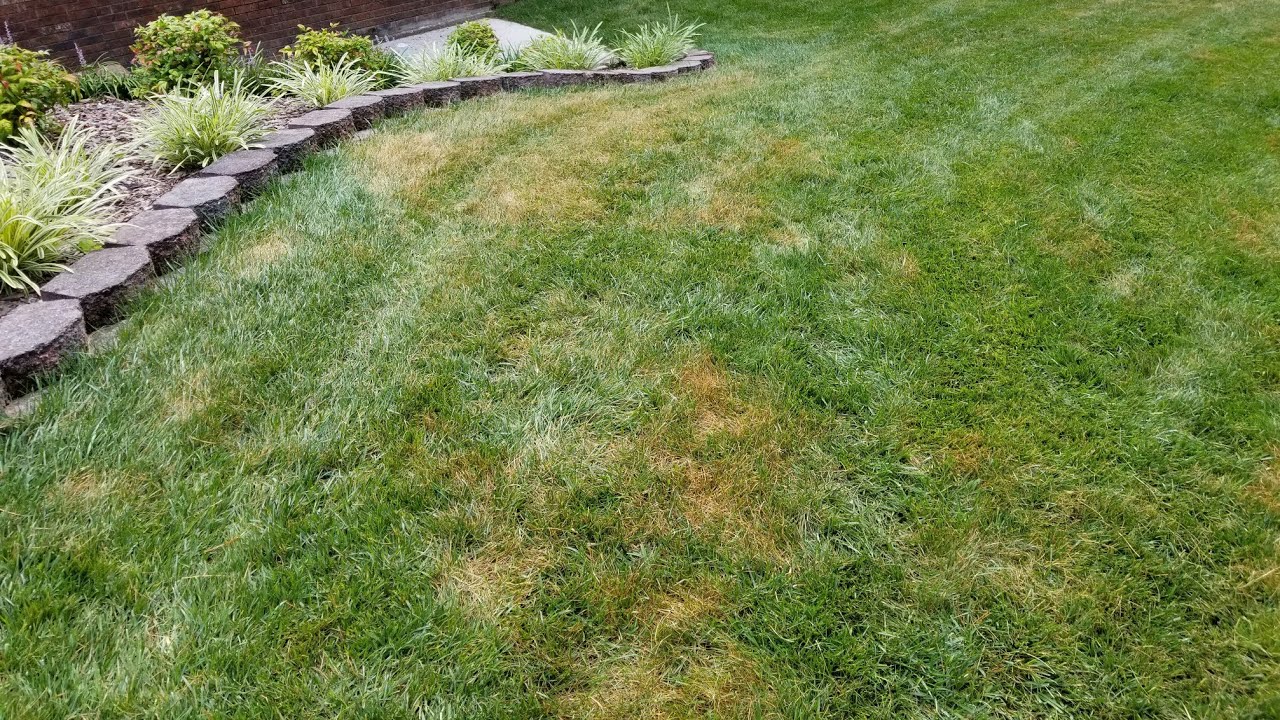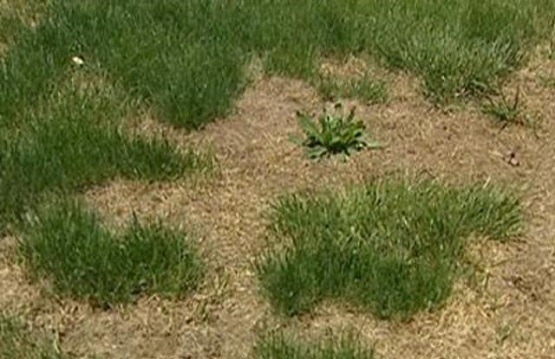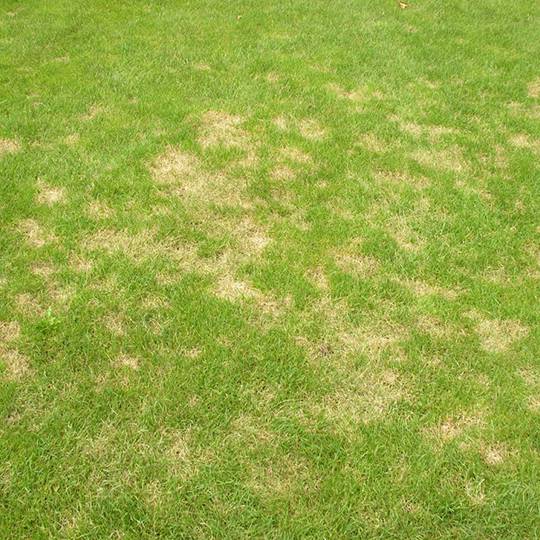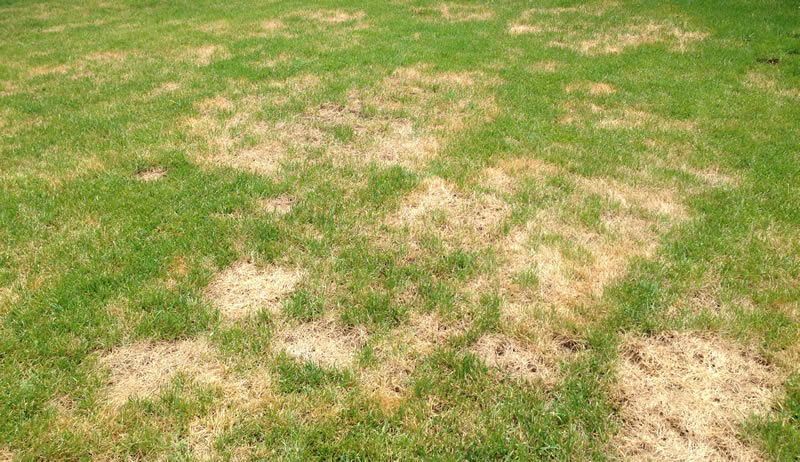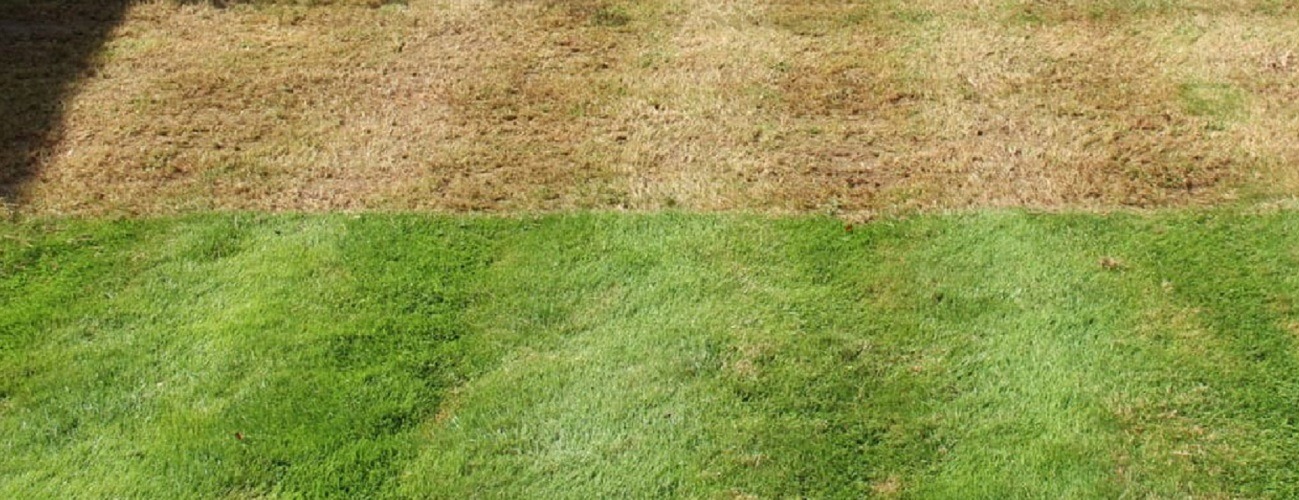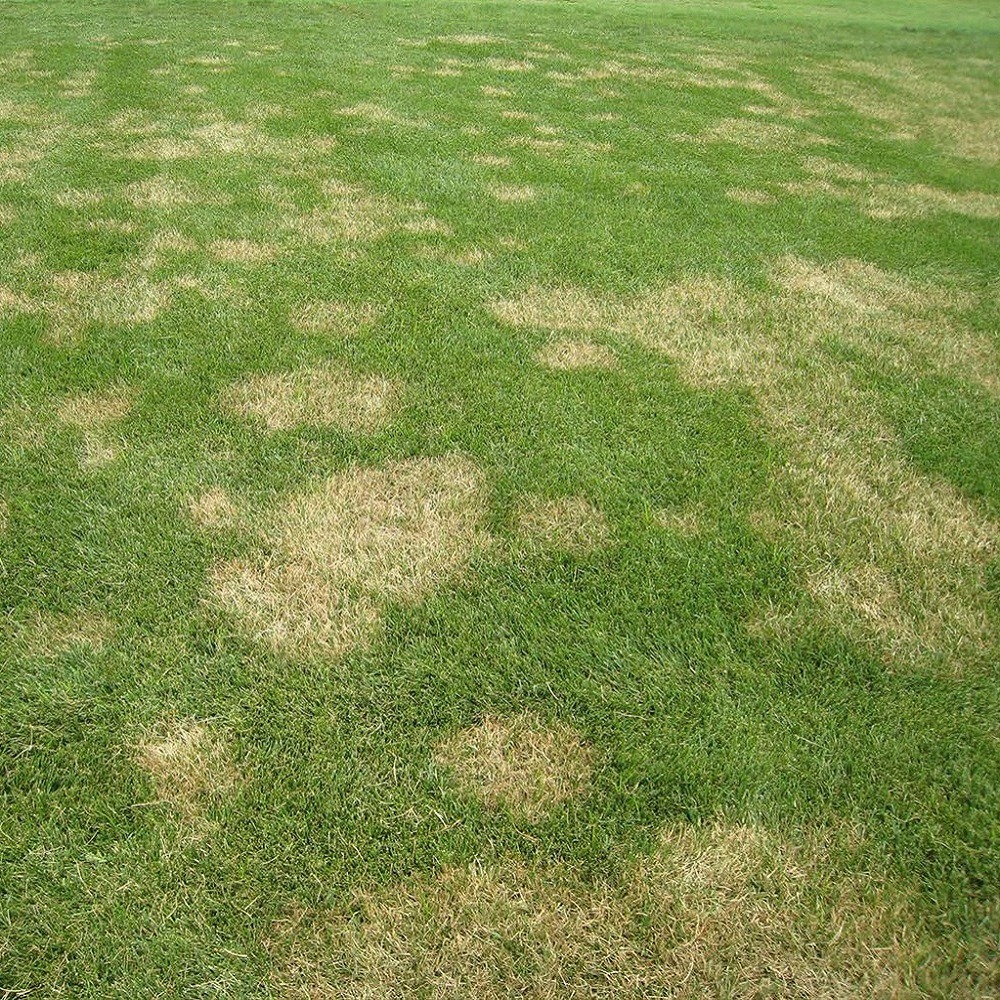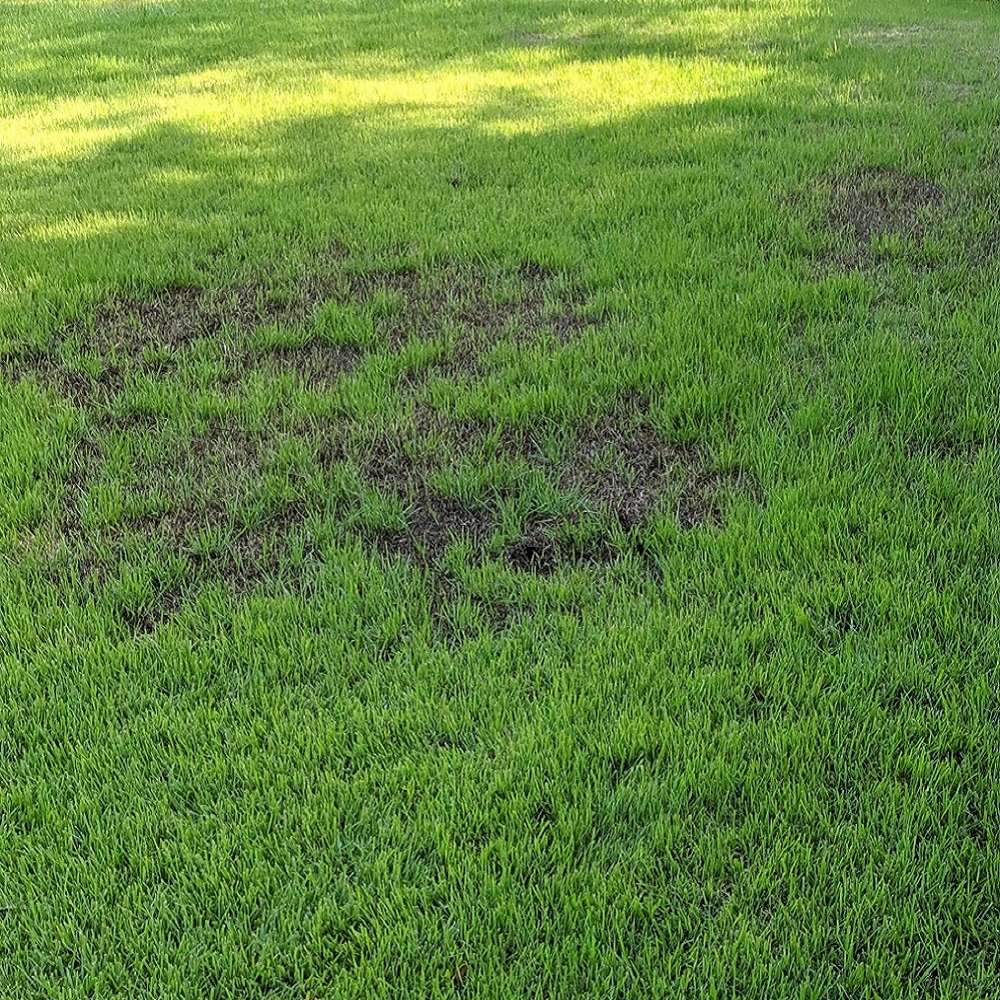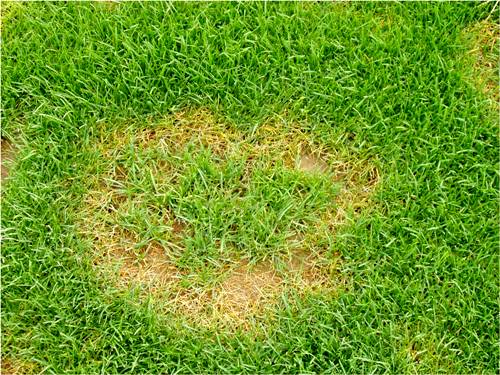Lawn Fungus Preventative & Treatment
Fungus can form during periods of excess moisture. Grass that does not receive enough nitrogen and potassium thru fertilization can become weak, which makes it easier to catch a fungal disease and harder to fight off. Below are 2 common fungal diseases in our area. If left untreated the fungus will spread to other areas of the lawn. With treatment we can stop the spread of the disease. The treatment will cure the affected areas. We can follow up with seeding in the fall of the affected areas.
Brown Patch Lawn Fungus
Brown patch is a summer disease that is most common on tall fescue but can occur on all turf grasses. It is caused by the fungus Rhizoctonia solani. The symptoms sometimes occur as discrete circular patches ranging from a few inches to several feet in diameter. Brown patch develops rapidly when night temperatures exceed 70 degrees and duration of leaf wetness exceeds 10 hours. Brown patch can be severe following extended periods of hot (70-90 degrees), rainy, humid weather.
Summer Patch Lawn Fungus
Summer patch sometimes, referred to as FrogEye patch, is a destructive disease commonly found in bluegrass. It develops initially June through August as small patches of turf, 2 to 6 inches in diameter. Grass blades in the patch change to a dull reddish brown, then a light straw color. In the final stages of the disease, circular patches of dead grass form throughout the area. Healthy grass often occurs at the center of the patch, resulting in a characteristic FrogEye pattern.
Symptoms develop because the fungus grows radially from a central infection point. When weather conditions are ideal for development, affected areas may overlap resulting in large areas of affected turf.

